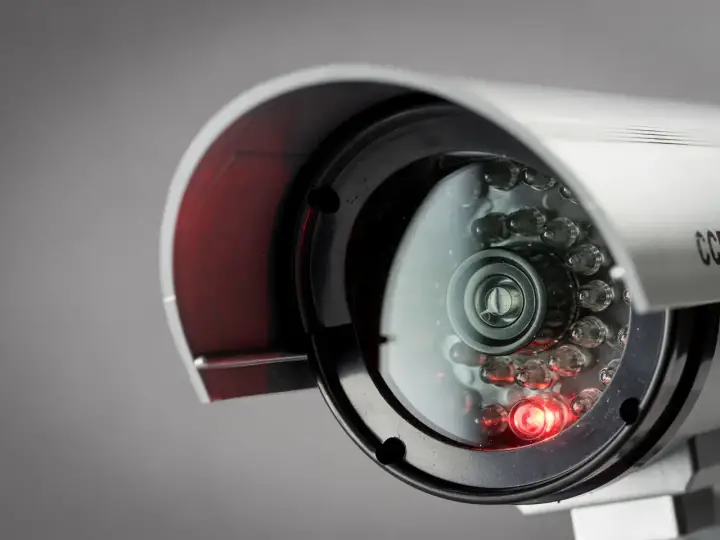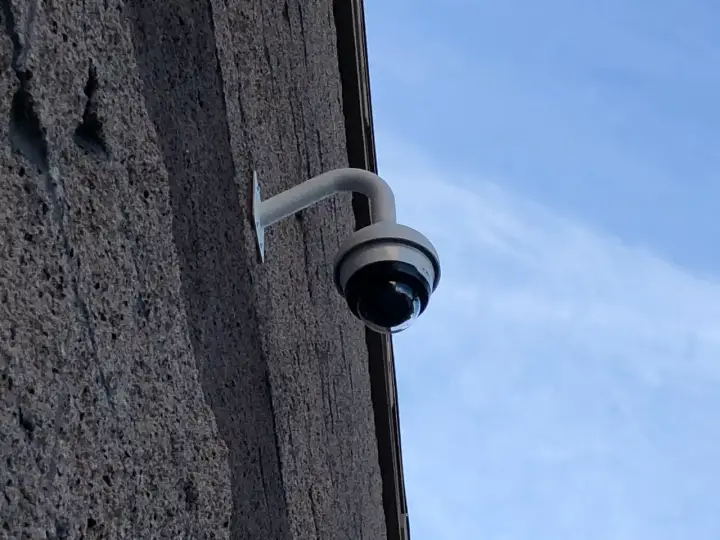How to Pick a Smart Home Camera That You Won't Regret
Updated on 13th Jan 2021 15:25 in General, Smart
Security cameras are a common sight in the modern home. This is partly because of the rise in doorbell cameras primarily fueled by Ring which has since brought many competitors to the industry. The reasons for having a camera at home are usually security-related or just for peace-of-mind. That could mean checking a parcel has arrived safely or verifying that you closed the garage door before leaving the house. Regardless of the reason, there are many options to choose from and making the right decision can feel daunting at first. Let's find out what the best camera for a smart home is.

Disclaimer: This post contains affiliate links. As an Amazon Associate, I earn from qualifying purchases.
Table of Contents
Camera connectivity
There are many different ways a camera can be connected to your smart home, and the choices can get confusing. Generally, there are two major ways a camera can be connected: with a wire or wirelessly. They both have pros and cons, which will push the decision towards one or another depending on your situation.
Wireless
A common theme in modern technology is the convergence towards more wireless devices. This makes sense as wires are difficult to route and can be a big pain over long distances. A wireless camera will use some sort of protocol to communicate with your monitor or recorder. Just as with smart devices, there are many protocols available, but the most common one is WiFi. Within this class of cameras, there are both ones that have one wire for power and ones that are totally wireless. The problem with wired power is that you need to route a wire to the nearest outlet. The advantage is that it will continue to function forever while your house has power.
The problem with completely wireless models is that they rely on batteries. That often means replacing the batteries in each camera as they run out of charge, which can be annoying, to say the least. Some of them use rechargeable batteries and have a solar panel on the top to keep the batteries charged. That feature obviously requires a lot of sunlight to work properly, which wouldn't be a problem if you didn't want to install one in a location that doesn't get a lot of direct sunlight. In any case, batteries are kind of a pain so you should carefully consider whether the benefit of losing the power cord is worth it for you.
The final problem with wireless cameras is that they can clog your WiFi network if there are too many. Every camera will constantly transmit video data for recording, viewing, or face recognition, which can use up all of the available bandwidth on your WiFi access point (AP). I go into more detail in my article about having good WiFi for your smart home, but the idea is that there can only be a limited number of devices talking to your AP at once. With enough cameras, you will start to see slowdowns where your phone might have to wait before downloading a web page or a video. This problem only applies to WiFi cameras, so if you plan on using some other kind of wireless protocol, you can safely ignore this part!
Wired
Wired cameras are pretty awesome as many of them can work using a single wire similarly to the mains powered wireless models. The most obvious problem with wired cameras is routing the wires. You might find that running a wire can be as simple as making a hole in the wall and pushing the cable thru (making sure there's nothing behind first!). If you aren't up for that sort of thing, don't worry because you can still sneak wires along the baseboards or in other hidden areas. You can usually find two kinds of wired cameras, those that use Ethernet and Analog.
An Ethernet camera uses your local network to transmit information to a recorder or a cloud server. Cameras that operate on the network are called IP cameras and can function alone as they can connect to the internet. Analog cameras differ in this aspect as they require a special receiver, usually called a Digital Video Recorder (DVR). An analog system is limited by the number of slots on the DVR and will require a model with more inputs if more cameras are required. That is in contrast to an IP camera, which offers effectively infinite expansion as you can add as many as your network can handle.
Any device connected to the network will be able to download the video stream from any of the cameras, assuming they are authorised to do so. Note that while you aren't limited by the camera system, your router will eventually become too slow to handle the network traffic. Thinking about the ethernet cameras might make you wonder how we can use a network camera with only one wire if normally things connected to the network need to be plugged into the wall. The answer is in a technology used by most network cameras called Power over Ethernet (PoE) which provides power and network connectivity over the same cable.
TP-Link 5 Port PoE Switch
While you can get away with using PoE injectors everywhere, a PoE switch will provide the power directly from the port. Instead of finding a plug for every camera, everything can be powered with one outlet! This switch by TP-Link supports Gigabit transfer speeds and will also power any supported device. Ports 1-4 (4 ports) are powered with the 5th designated as the bridge to your existing router or switch. If you think you will need more ports to support additional cameras, there is also an 8 port version.
Check out the TP-Link 5 Port PoE Switch on Amazon!
Indoor cameras
Being one of the two major types of security cameras, indoor cameras are similar to their outdoor counterparts in many ways, with the biggest difference being their outer case. An indoor camera isn't expected to encounter too many harsh conditions which usually results in it being cheaper. It's important to remember that most indoor models will be susceptible to damage if water should ever get on them. It obviously doesn't rain inside the house, but you should still be careful when placing these cameras around by avoiding any areas where water may splash.
Areas such as:
- The kitchen
- Around indoor plants
- In an entryway
- In the garage
Outdoor cameras
As the name might suggest, these cameras are built to withstand the harsh climate of the outside. They will usually have a covered lense coupled with a durable body to ensure they can stand the elements. Video doorbells fall into this category as they spend all of their time outside. These cameras will be sealed to prevent water from getting inside and damaging the electronics. While they are designed to be used outdoors, you can always use them inside for locations where they might otherwise get damaged. Most cameras sold for use outdoors will say they are "waterproof" or "weather-resistant", but these terms are not standards, so they basically mean nothing.
To ensure you get something that will stand your climate, always check the IP rating (Wikipedia) to ensure it has a sufficient rating for where you live. The most common rating for outdoor cameras is IP 65, which corresponds to the device being dustproof and resisting light water jets. The light water spray is similar to the effect of rainfall or snow and will help you feel confident that your camera will stand your local climate. Keep in mind that the second digit needs to be at least a 7 for the device to resist immersion in water up to 1 meter for 30 minutes. An IP 65 device dropped in water could stop working - so be careful!

Camera shapes
Security cameras come in many shapes and sizes, with each being good for a specific situation. Some types might look better than others, which could influence your decision as this is your home after all. The types are as follows.
- Bullet: Has a straight, long, and narrow body that looks a bit like a tube. They often have much better optical capabilities because there is more room inside.
- Dome: Perhaps the most common type consists of a camera inside a glass or plastic dome and is designed to be mounted primarily on ceilings. It's hard to reach, which makes it difficult to steal but also a pain to install!
- Pan/Tilt: These are mounted on a motorized chassis which can turn both in the horizontal and vertical directions. They are excellent due to their versatility but are also harder to mount due to the large enclosure.
- Turret: The turret camera is similar to the dome style but rather than being completely enclosed, the camera lens is on a movable pan/tilt mount. You can position this type of camera to point in any direction and at any angle, which is highly useful.
Recording options
The final point to consider is how the video will be recorded as a security camera won't be too useful without video playback. There are two primary ways to record video in the consumer space: with a cloud service or locally. I will always recommend local storage for the simple reason that uploading video of your home to a cloud service never seemed that private to me. Who knows what kind of sensitive information a camera could pick up. Maybe one day you could accidentally show your credit card which would then be uploaded to the internet. A cloud service is supposed to be totally private and well protected, but we all know that companies get hacked all the time.
That's not even to mention that many manufacturers will actually charge you a monthly fee to use their service and it isn't always cheap! In any case, local storage will still allow you to view the video feed remotely in much the same way that HomeKit control works despite using a local hub. Many systems support local recordings out of the box, but others will require a Network Video Recorder (NVR) to record video from all of your network cameras to a hard drive. If you want to use a cloud service, they will either be free to subscription-based. In either case, they will often establish a data limit after which your older recordings will be deleted. You can optionally pay more for additional space, though that isn't offered everywhere.
| Storage | Pros | Cons |
|---|---|---|
| Local | No monthly fee Full control over data |
Needs to be configured Can be difficult to backup data properly |
| Cloud | No setup hassle Recordings are backed up automatically |
Can be expensive Strict data limits Data in the hands of a third party |
Smart home integration
Since we are looking for a camera that can be used in a smart home, we should consider the integration potential. The features vary massively from one ecosystem to another, but there are a few we should always expect. They should all have recordings that allow us to view exactly what happened at a given time. It would also be good for the camera to notify a smart home controller that motion was detected or that someone is at the door. Finally, we should be able to view the live camera feed inside our smart home control panel.
Most cameras on the market have some form of the features listed above, but what changes between them is how this integration is performed. Alexa compatible cameras can only notify the smart home if the manufacturer's cloud system identifies something in the video and sends a message to Alexa's servers. The difference is that in that scenario, Alexa is not the one that supports the feature, rather the camera has implemented them. HomeKit secure video supports notifications and facial recognition directly in the ecosystem, meaning you don't need to shop for a camera that supports them.
When we rely on the camera's manufacturer to support the feature, we add an extra point of failure to our system. If Alexa or the manufacturer's servers fail, you won't be able to use the camera. In contrast, a HomeKit camera only relies on your hub to be functioning, which reduces the chances something will fail. In any case, it's important to distinguish the difference between a feature the smart home ecosystem supports and a feature provided by the camera. These differences will change how reliable you can expect your system to be.
What should you use?
As you can see, there are a lot of factors involved in picking a security camera. In this section, I will provide some general recommendations for what I think are the best options. My choices were made from my experience with cameras in my home and at work. I would recommend using a wired network camera where possible. They have a single power and network cable, making it easy to install while also being highly reliable due to being directly connected to your network. If that isn't an option, my next recommendation is a mains powered wireless camera. Unlike their battery-powered counterparts, these aren't operating under the restrictive battery capacity, which allows them to deliver better performance all around.
In terms of shape, I would say the best for a home is the dome or turret style as they are the easiest to install in a visually pleasing way. Another good option is to use a video doorbell as they offer interesting features in addition to the video camera such as turning on the live video view when someone rings the doorbell. Indoor cameras can be found in a style we didn't talk about designed to allow it to stand up straight. These can be a good choice for those who want an easy way to get camera coverage without drilling in the wall or ceiling.
When it comes to smart home integration, quite a few of these systems can be directly integrated with various ecosystems such as HomeKit or Home Assistant. The product description will always mention if the device is compatible with Alexa, Google Home, or HomeKit. Unfortunately, things get a bit complicated when we consider how each ecosystem integrates with camera systems. For the most part, a network camera transmits a video stream to anything on the local network that wants to listen. That is how Home Assistant records video as you just have to add the cameras IP address into your configuration.
Sadly, most other ecosystems only support specifically compatible devices while offering limited features. Below is a table summarizing the features of each major ecosystem. Note that the features are only rated for the ecosystem itself and not what the camera can do. For example, you can get a camera for Alexa that will perform facial recognition, but since that feature isn't provided by Alexa, it isn't listed.
| Ecosystem | Live video view | Face recognition | Recording mode | Works with |
|---|---|---|---|---|
| HomeKit | Yes | Yes | Cloud only, 5 cam limit per account, subscription | HomeKit compatible cameras only |
| Alexa | Yes (Only Echo Show/Spot) | No | No | Alexa compatible cameras only |
| Google Home | Yes (Only with screen) | Yes (with Nest Aware subscription) | Cloud only, subscription | Google Home compatible cameras only |
| Home Assistant | Yes | Yes (with a plugin) | Yes | Any network camera |
You can even get a camera that will overlay sensor activations in the video playback! If that sounds cool, check out my post on the Aqara camera hub here.




